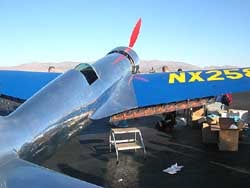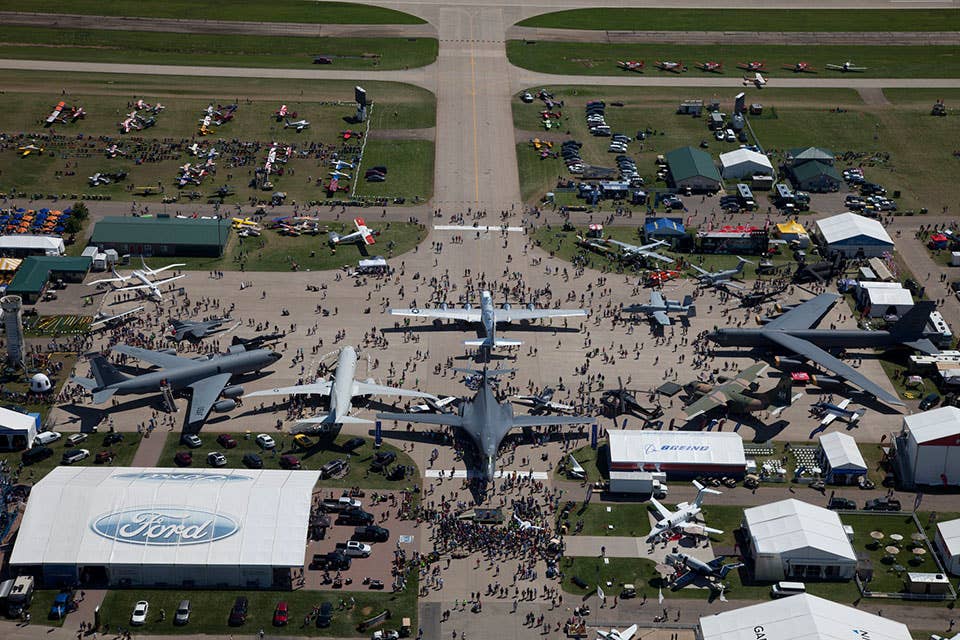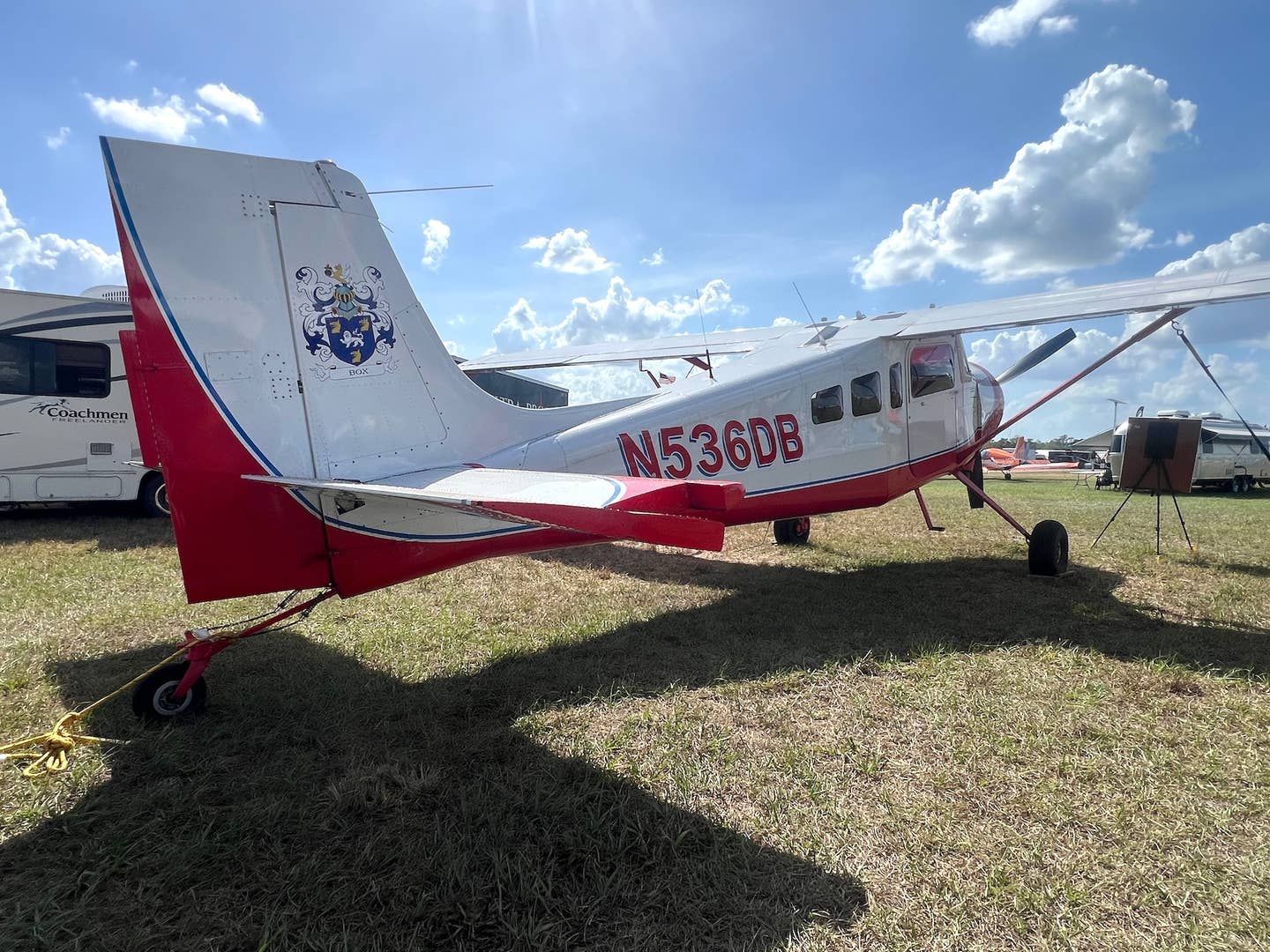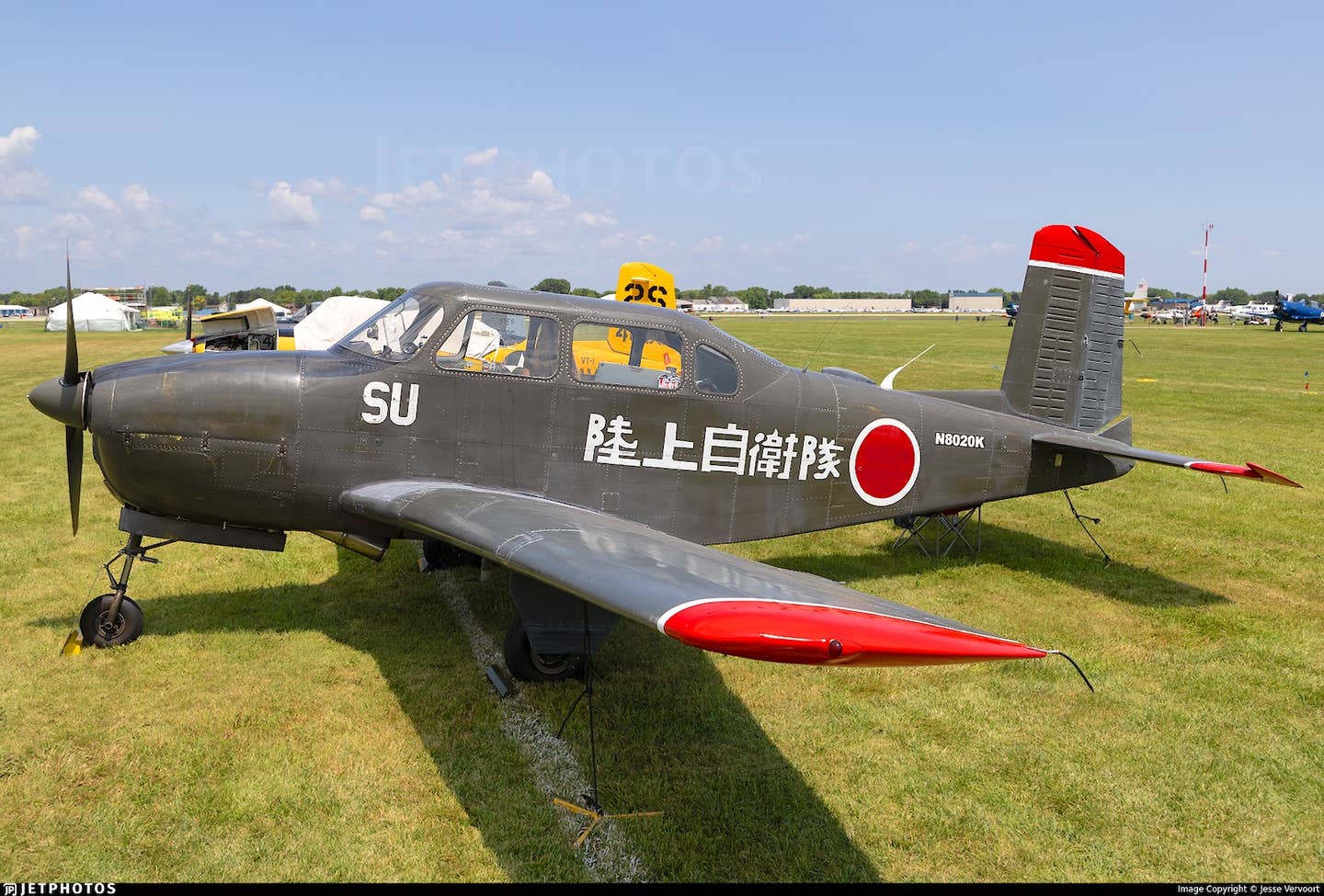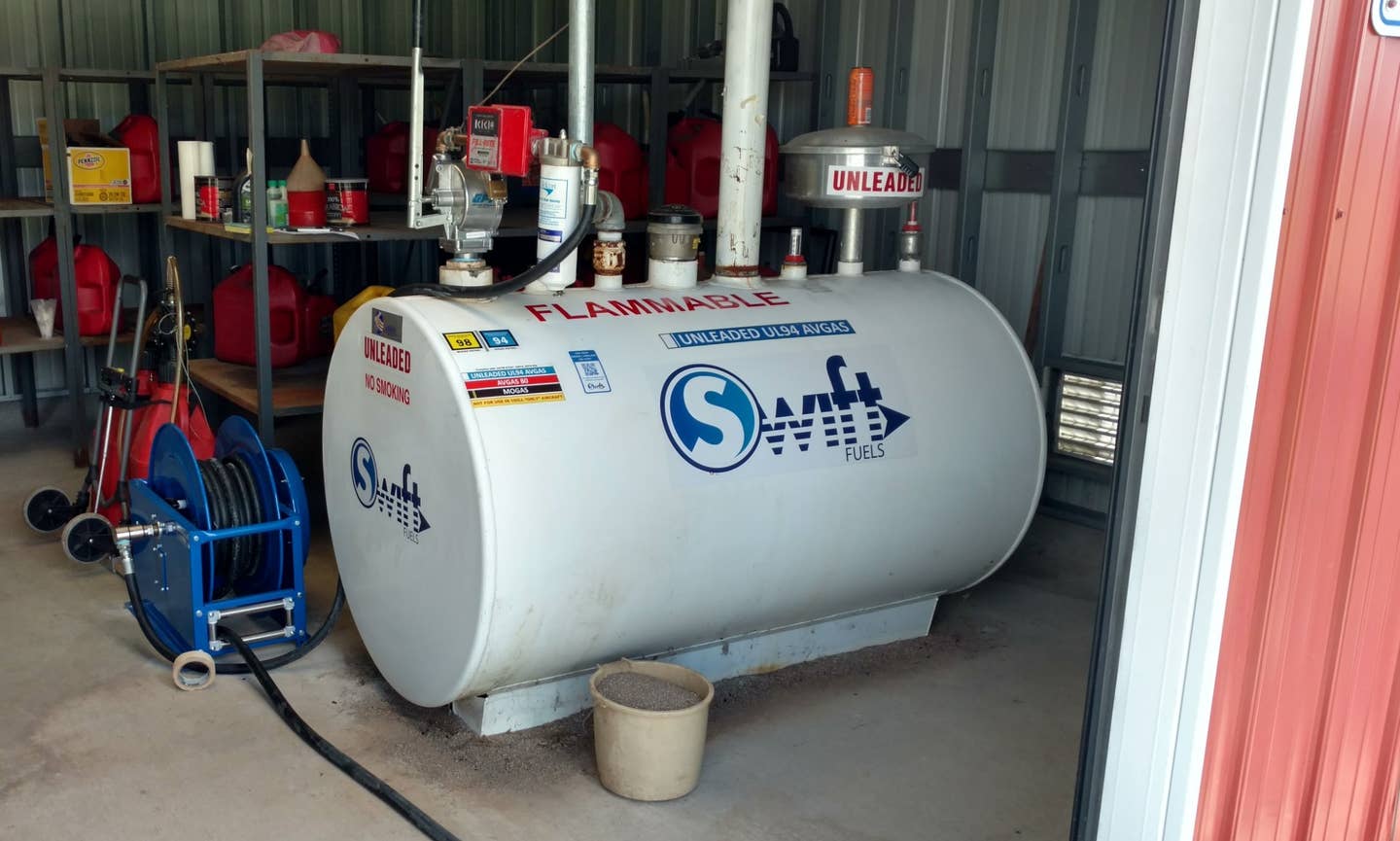Hughes H-1 Shows Its Stuff at Reno 2002
Is it possible for a plane designed by the eccentric Howard Hughes in the 1930s to break speed records even today? AVweb’s Matt Paxton was in Reno as a recently built replica of the Hughes H-1 showed that some designs are timeless.
 Howard Hughes never did anything halfway. From the HK-1 Hercules, a.k.a. "Spruce Goose," to his business empire, to Jane Russell's brassiere, Hughes was on the leading edge. His H-1 Racer, designed and built in 1935, was no exception. The H-1 was the first airplane to use flush riveting and butt-joined skins. Its cowling was state-of-the-art, incorporating the latest NACA research into low-drag cowls for radial engines. Its gear retracted completely, even the tailwheel. No struts or wires marred its sleek lines.
Howard Hughes never did anything halfway. From the HK-1 Hercules, a.k.a. "Spruce Goose," to his business empire, to Jane Russell's brassiere, Hughes was on the leading edge. His H-1 Racer, designed and built in 1935, was no exception. The H-1 was the first airplane to use flush riveting and butt-joined skins. Its cowling was state-of-the-art, incorporating the latest NACA research into low-drag cowls for radial engines. Its gear retracted completely, even the tailwheel. No struts or wires marred its sleek lines.
In the H-1, Hughes set an absolute landplane world speed record of 352.288 mph in 1935, and in 1937 set the transcontinental speed record, flying from Los Angeles to New York in seven hours and 28 minutes. The H-1 is on display today in the National Air and Space Museum (NASM) in Washington, D.C.
Four years ago, Jim Wright of Cottage Grove, Ore., set out to build an exact replica of the H-1. Wright was intrigued by the H-1 for a variety of reasons. One was the technological aspect of the H-1. It was advanced far beyond the state-of-the-art for 1935; the military was still flying fabric-covered fixed-gear biplanes at the time. The H-1 had a major impact on aircraft development, and likely influenced such notable aircraft as the P-47, the Zero, and the Focke-Wolfe Fw-190. The Hughes H-1 was the last privately funded aircraft, i.e., non-military, to set the world landplane speed record. And, certainly not least, Hughes himself remains a fascinating and enigmatic personality.
The team that Wright assembled to build the second H-1 had to deal with Hughes's legendary mania for secrecy. Original plans were not available, and most of the people who built the H-1 in 1935 were dead. The designers were able to make detailed measurements of the original H-1 in the NASM, and were fortunate to find the sole-surviving member of the original design and construction crew.
It is reported that Hughes called the entire design and construction team for the H-1 Racer together after it was completed and swore them to secrecy. At the time, this actually made sense, because Hughes hoped to capitalize on the H-1's innovations, and didn't want them to be pirated away by competitors before he could use them. Hughes supposedly told the group that if any of them talked, "Bad things would happen!" He didn't elaborate as to what those might be, but the surviving designer told Wright's team that no explanation was necessary. As a result, little was known about the airplane other than what was obvious to the eye, and it never received large-scale attention by the public.
Besides the obstacles inherent in reconstructing the design and constructing the airframe, the original H-1 used an unusual engine, a Pratt and Whitney R-1535 Twin Wasp. That engine was later scaled up into the famous R-1830, which still powers DC-3s today. But the R-1535 is a true rare-bird. Fortunately for the Wright team, the first call they made yielded an intact engine that had been in storage for years. The pickling had been done right when it was stored, and the only major items requiring replacement were the pistons, which were showing some signs of deterioration, and some bearings.
The original H-1 had two sets of wings: A shorter wing was used for the absolute record attempt, and a longer one was built for the transcontinental record. Wright's group built the longer wings, and believes that they actually may be faster than the short version. The wing is one piece, of mostly wood construction: spruce spars and ribs, with mahogany plywood covering. There is some metal used in high load areas, such as around the gear attach points. The ribs are quite closely spaced to maintain the airfoil shape at high speeds.
Early this summer, the replica H-1 was completed. So closely does it follow the design and construction of the original that it carried the serial number of 2. Jim Wright lifted the H-1 off for its maiden flight on July 9. Wright told AVweb that the H-1 is a delight to fly, and other than a fairly abrupt stall break and lousy visibility forward when it's in the three-point attitude, it flies "like a 172."
Wright always wanted the replica H-1 to demonstrate the achievements of the design, and chose to make an attempt at the existing world's 3-km speed-record for piston aircraft in the H-1's weight class, C-1.D. The current record, held by Stephen Oster in an Aerostar, is 266.03 mph. Interestingly, Hughes neglected to check a box on the application form for his 1935 record, which would have claimed the record in its weight class. If he had, he surely would still hold that record today.
The Wright team decided to make the attempt during the National Championship Air Races at Reno, on the 67th anniversary of Hughes' record, September 13, 2002. The H-1 has drawn large crowds to the east end of the show area at Stead Field since its arrival. Jim Wright himself, along with many of his design and build team, have been with the airplane for much of the time, and have made themselves available to answer questions about the airplane and their plans for it.
Early on Friday morning, before dawn, the National Aeronautic Association (NAA) observers and timekeepers, along with some coffee-juiced journalists, headed out to the desert where the timing traps were set up. The course was along the north-south runway at Stead. A frame of PVC pipe supported a cable vertically, which, along with a stake in the ground about a hundred yards from the PVC frame, served as a sighting device for the observers. A video camera with a timer recorded each pass for verification.
A bit before 7 a.m. the Hughes's distinctive rumble could be heard from the ramp at Stead, and shortly after, we could see the Racer accelerating down Runway 8 on takeoff. It banked into the rising sun and flew north. Before the Hughes entered the course, a Piper Malibu had flown several practice runs insuring that all equipment was in order and the sighting and altitude measuring devices were OK. All was in readiness for Wright and the H-1.
Wright elected to make one practice run himself to the south before beginning the timed runs. We could hear the H-1, but it was difficult to see in the early morning light against the backdrop of mountains that lie to the west and north. But by following the sound, and knowing where the course was, it could be picked up visually. It swept down onto the course, at about 200 ft AGL over the runway, and flashed by us at the south (1 km) trap. Wright climbed after exiting the course, flew a 270-degree turn, and descended back northbound for his first official pass. On this pass, he narrowly broke the altitude restriction on the north end. He told AVweb that the rising terrain to the north along with a power line caused him to get a bit too high. NAA and Federation Aeronautique Internationale (FAI) rules require four consecutive passes in opposite directions to qualify for a record, so Wright's next pass to the south then became the first eligible for the attempt. His next three passes appeared to be within the course limits, but he flew one more just for insurance.
After the runs, Wright and the team were enthusiastic about the H-1's performance. "It was a fun day," Wright remarked.
The procedures required to certify the record take time, and it would be noon before they knew for sure if they had set the record. Wright said that the H-1 was really only flying at about 65 percent power because of the 5,000-foot elevation at Stead, and the fact that the prop only allowed about 2200 RPM before the tips went supersonic. Modifications to the prop allowing greater pitch should result in even greater speed, though he said they have no plans to go after Hughes' 352-mph record. Wright said that Hughes was probably pulling close to 1,000 horsepower out of the engine. Wright said he did not want to stress the engine that much.
He did say that they plan on trying to equal or better Howard Hughes' transcontinental time. The H-1 has a 4,000-mile range, and can complete the flight nonstop.
It's likely that Wright will be showing off the H-1 at airshows and aviation events in the future. If he does, plan on seeing it. The workmanship is superb; indeed, it approaches that of artistry. The original airplane was seminal in aviation development, and has never gotten the credit it is due. And Jim Wright and his people are genuinely happy to talk about it to all comers.
Oh yes, the record attempt? Jim Wright and the H-1 #2 smashed the current record, flying the 3-km course at an average of 304 mph.



